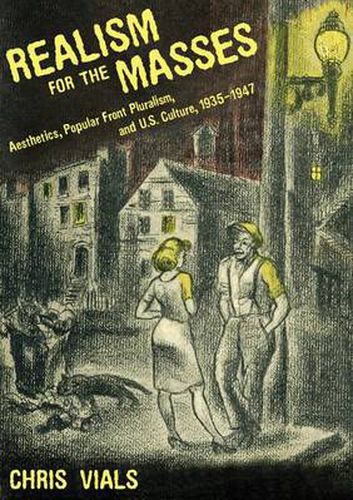Readings Newsletter
Become a Readings Member to make your shopping experience even easier.
Sign in or sign up for free!
You’re not far away from qualifying for FREE standard shipping within Australia
You’ve qualified for FREE standard shipping within Australia
The cart is loading…






Realism for the Masses, is an exploration of how the concept of realism entered mass culture, and from there, how it tried to remake
America.
The literary and artistic creations of American realism are generally associated with the late nineteenth century. But this book argues that the aesthetic actually saturated American culture in the 1930s and 1940s and that the left social movements of the period were in no small part responsible. The book examines the prose of Carlos Bulosan and H. T. Tsiang; the photo essays of Margaret Bourke-White in Life magazine; the bestsellers of Erskine Caldwell and Margaret Mitchell; the boxing narratives of Clifford Odets, Richard Wright, Nelson Algren; and the Hollywood boxing film, radio soap operas, and the domestic dramas of Lillian Hellman and Shirley Graham, and more.
These writers and artists infused realist aesthetics into American mass culture to an unprecedented degree and also built on a tradition of realism in order to inject influential definitions of
the people
into American popular entertainment. Central to this book is the relationship between these mass cultural realisms and emergent notions of pluralism. Significantly, Vials identifies three nascent pluralisms of the 1930s and 1940s: the New Deal pluralism of
We’re the People
in The Grapes of Wrath; the racially inclusive pluralism of Vice President Henry Wallace’s
The People’s Century ; and the proto-Cold War pluralism of Henry Luce’s
The American Century.
$9.00 standard shipping within Australia
FREE standard shipping within Australia for orders over $100.00
Express & International shipping calculated at checkout
Realism for the Masses, is an exploration of how the concept of realism entered mass culture, and from there, how it tried to remake
America.
The literary and artistic creations of American realism are generally associated with the late nineteenth century. But this book argues that the aesthetic actually saturated American culture in the 1930s and 1940s and that the left social movements of the period were in no small part responsible. The book examines the prose of Carlos Bulosan and H. T. Tsiang; the photo essays of Margaret Bourke-White in Life magazine; the bestsellers of Erskine Caldwell and Margaret Mitchell; the boxing narratives of Clifford Odets, Richard Wright, Nelson Algren; and the Hollywood boxing film, radio soap operas, and the domestic dramas of Lillian Hellman and Shirley Graham, and more.
These writers and artists infused realist aesthetics into American mass culture to an unprecedented degree and also built on a tradition of realism in order to inject influential definitions of
the people
into American popular entertainment. Central to this book is the relationship between these mass cultural realisms and emergent notions of pluralism. Significantly, Vials identifies three nascent pluralisms of the 1930s and 1940s: the New Deal pluralism of
We’re the People
in The Grapes of Wrath; the racially inclusive pluralism of Vice President Henry Wallace’s
The People’s Century ; and the proto-Cold War pluralism of Henry Luce’s
The American Century.